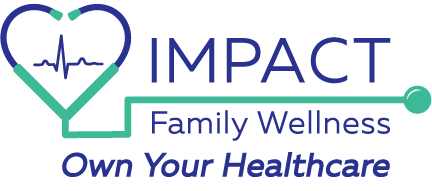Understanding Direct Primary Care: Advantages and Disadvantages
Pros & Cons of Direct Primary Care Explained
Direct primary care stems from a history of seeking personalized healthcare approaches, diverging from traditional models. Recognized by both the American Academy of Pediatrics and the World Health Organization, this model emphasizes a close patient-provider relationship and proactive wellness strategies. With a focus on accessibility and patient empowerment, direct primary care offers an innovative alternative to conventional healthcare structures. Curious about how such a system could benefit your healthcare journey, especially if you're navigating without insurance? Keep reading to examine the pros and cons of direct primary care and how it can reshape your medical experiences.
In the realm of modern healthcare, Direct Primary Care stands out as a beacon of patient-centered excellence that has roots deeply embedded in a rich history of seeking personalized healthcare solutions. It breaks away from conventional models, raising the bar for a more intimate and proactive approach to healthcare.
By prioritizing accessibility and patient empowerment, Direct Primary Care presents a revolutionary alternative to the often rigid and impersonal structures of traditional healthcare. This model not only opens up new avenues for patients to take charge of their health journey but also sets a foundation for transformative health experiences. For individuals navigating the complexities of healthcare without insurance, exploring the nuances of Direct Primary Care could prove to be a game-changer. Delving into the advantages and potential drawbacks of this system can offer valuable insights into how it might reshape one's approach to healthcare, offering a gateway to a more holistic and patient-centric experience.
When it comes to pros and cons of Direct Primary Care, many patients have found themselves seeing the pros outweigh the cons.
Understanding the Personalized Care Model
The practice of Direct Primary Care (DPC) prioritizes the rapport between patients and healthcare providers, aiming to foster stronger, more involved connections. This model strips away certain financial complexities, such as those surrounding taxes and insurance billing, which often distract from actual care. Patients typically pay a flat, monthly fee, directly enabling a focus on thorough exams and continuous disease management rather than episodic care. For individuals with chronic conditions, this structure can be particularly beneficial as it allows for tailored health strategies designed around their specific needs. Organizations advocating for DPC argue that, by restoring the centrality of patient-provider interactions, a benefit of Direct Primary Care that facilitates a return to attentive, personalized care.
Evaluating Direct Primary Care Costs
Direct Primary Care (DPC) introduces an alternative financial construct in healthcare, primarily through a subscription-like payment model. Patients trade unpredictable costs, such as variable deductibles from traditional insurance, for a consistent monthly fee that covers the majority of their primary care needs. Every trip to a healthcare provider or urgent call after an injury is included without the stress of additional charges. This section breaks down the nuanced spectrum of membership fees and pricing structures inherent to DPC, providing essential information for those considering a switch. It also contrasts these expenses with standard group health insurance plans to gauge which might be more effective in terms of cost and care quality.
Comparing Costs With Traditional Health Insurance Models
When faced with an emergency, costs can skyrocket under traditional health insurance models, often leading to a financial burden for patients. By contrast, a great benefit of Direct Primary Care is a fixed monthly fee. It tends to shield members from the unpredictability of such expenses, potentially saving patients significant sums of money in the long term.
Traditional models frequently include a variety of out-of-pocket expenses, which Direct Primary Care typically avoids with its simplified financial approach. Additionally, this model often mirrors the concierge services many seek online via https, offering simplified access to healthcare resources without inflated costs.
Access to Healthcare Services and Availability
The model of Direct Primary Care (DPC) offers the appealing option of arranging appointments on the same or the following day, sidestepping the notoriously long waits many experience with traditional health care systems. This immediacy is especially pertinent for individuals managing chronic illnesses like diabetes or for those in need of prompt treatment for conditions such as infection. A study published in the Journal of the American Medical Association (JAMA), illuminates the correlation between timely care and improved health outcomes. However, this enhanced accessibility isn't uniformly available, with some regions observing a gap in coverage. While many enjoy the benefits of Direct Primary Care, rapid appointments and in-depth care, others encounter barriers to accessing these services, highlighting a disparity that warrants further examination and resolution.
The Convenience of Scheduling Same or Next-Day Appointments
The shift toward same-day or next-day appointments embraced by Direct Primary Care clinics is a welcomed deviation from the traditional waits enforced by many healthcare providers. This level of promptness, underpinned by efficiency principles reminiscent of health informatics advancements, underscores an increasingly patient-centered approach to healthcare, aligning with the broader objectives of the Affordable Care Act.
Financially, the ability to see a physician swiftly without the need for prior approval from insurance can lead to decreased medical expenses over time. As such, this quick-access model can work harmoniously with a patient's savings account, ensuring that funds are reserved for truly unforeseen healthcare costs, an advantage detailed in various gov publications and pdf resources explaining Direct Primary Care benefits.
Limited Access Issues in Some Areas Explained
Despite the many advantages of Direct Primary Care, certain regions grapple with a scarcity of providers, due, in part, to red tape which impedes the establishment of new practices. This shortage negatively impacts patients seeking specialized services.
For more common conditions such as hypertension, a lack of widespread knowledge about the Direct Primary Care model can leave patients bound to less efficient treatment paths. Those who might benefit from Direct Primary Care's comprehensive management approach often remain entangled in traditional healthcare's complex web of policies and procedures.
The Impact of Direct Primary Care on Health Outcomes
As healthcare practices evolve towards prioritizing patient-centered care, Direct Primary Care (DPC) emerges as a transformative approach aimed at enhancing health monitoring and management. The attentive nature of DPC, undistracted by excessive paperwork and financial red tape, allows practitioners to dedicate their full attention to understanding patient histories and needs. This careful scrutiny is particularly advantageous in managing chronic diseases, where consistent, focused care can mean the difference between a managed condition and a costly health crisis. Various studies underscore the connection between the personalized attention inherent in DPC and the improved outcomes for chronic disease sufferers, marking a shift in how expenses are aligned with health benefits.
Analyzing Improved Health Monitoring and Management
Direct Primary Care shifts the emphasis from a revenue-driven business model to one that values patient wellness above all, diverging sharply from traditional insurance-based practices. This allows for more frequent health monitoring, giving care providers the ability to swiftly detect and manage acute conditions like influenza, which can otherwise lead to severe complications if not promptly addressed.
The economic structure of Direct Primary Care redirects capital that would traditionally fuel bureaucratic processes into resources for improved patient management. The result is a healthcare setting where patients experience continuous, not episodic, health supervision, resulting in a proactive stance against chronic illnesses and improving overall health outcomes.
Direct Primary Care (DPC) offers a relationship-focused healthcare model with simple, upfront costs, reducing financial unpredictability and enhancing patient-doctor communication. While it facilitates immediate access to care and continuous disease management, its benefits can be inaccessible in some regions due to a lack of providers. Studies indicate that DPC can lead to improved health outcomes, especially for those with chronic conditions by providing regular, tailored care. Nonetheless, for patients without insurance, DPC serves as a cost-effective healthcare alternative, potentially freeing them from the hidden charges of traditional care environments.
Impact Family Wellness is committed to providing accessible and affordable healthcare to families in the community. As a Direct Primary Care practice, we offer personalized care, convenient appointments, and a flat monthly fee. With three convenient locations and telehealth options, we are bridging the gap of inaccessibility and ensuring that everyone has access to quality healthcare.
FAQ
1. What is Direct Primary Care (DPC)? DPC is a healthcare model that offers a personalized and affordable approach to primary care. Unlike traditional insurance-based systems, DPC practices charge a flat monthly fee, rather than per-visit charges. This fee-for-membership model eliminates many of the administrative burdens associated with insurance, allowing doctors to spend more time with their patients.
2. What are the benefits of DPC? Benefits of DPC include personalized care, affordability, convenience, and a focus on preventive care.
3. What are the limitations of DPC? Limitations of DPC include limited coverage for specialized care or procedures, availability, out-of-pocket costs, and lack of insurance benefits.
4. Is DPC right for me?
The decision to choose DPC depends on your individual needs and circumstances. If you are looking for personalized care, more affordable healthcare, and easier access to your doctor, DPC may be a good option for you. However, it is important to carefully consider the limitations of DPC, such as the potential need for additional insurance coverage.

CONTACT
Cedar Park & Liberty Hill
Phone: 512-537-2177
Fax: 512-572-1277
Thorndale
Phone: 512-898-4001
Fax: 512-572-2177
admin@impactfamilywellness.com
QUICK LINKS
LOCATIONS
Cedar Park
12171 West Parmer Lane, #102
Cedar Park, TX 78613
Liberty Hill
9017 West State Hwy 29, Bldg 1, ste 205
Liberty Hill, TX 78642
Thorndale
200 Sydney Boulevard,
Thorndale, Texas 76577
All Rights Reserved | Impact Family Wellness
All Rights Reserved | Impact Family Wellness
Privacy Policy | Terms of Service Website by EGS Marketing Solutions
Privacy Policy | Terms of Service
Website by EGS Marketing Solutions









